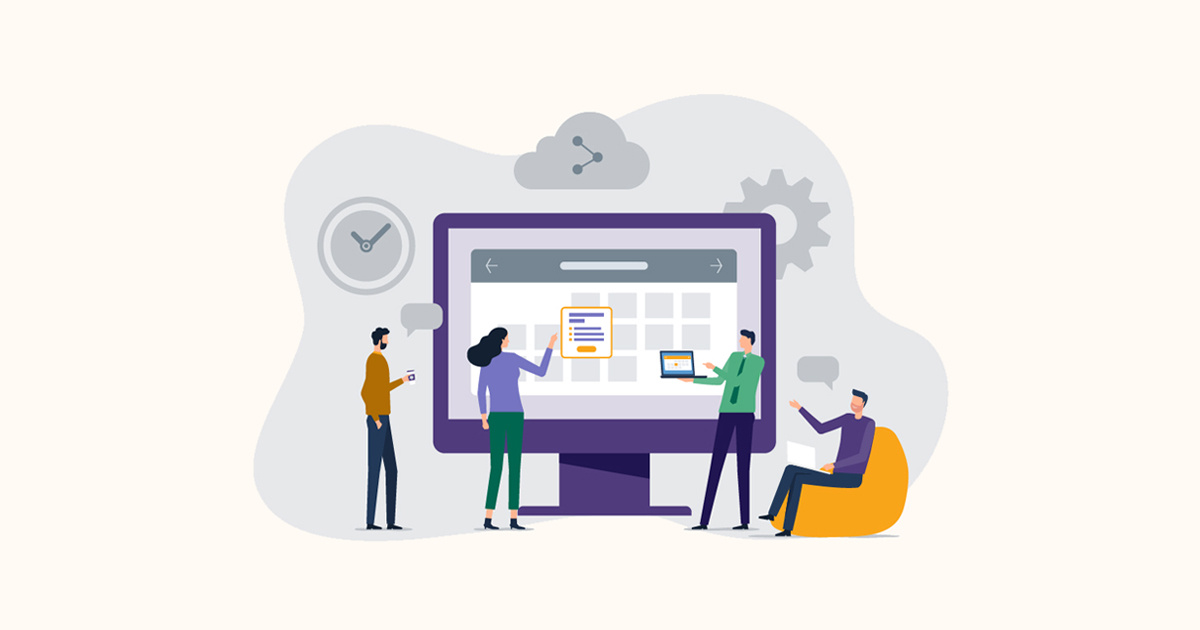
Resilience has never been more important for us, as organizations and as individuals. At the intersection of strategy and people, learning and development leaders are uniquely positioned to embed business resilience and operationalize it. L&D executives discussed how—and shared with peers their recent experiences during pandemic—at the most recent Learning Lab on June 22 facilitated by Vantage Partners and hosted by Danny Ertel, a founding partner at Vantage Partners.
According to Vantage Partners’ June 2020 pulse survey, 86% of learning and development teams have made it a greater priority to build organizational resilience as of late, and it is not hard to see to why. Amidst myriad, inherently tangled human rights, public health, and economic crises in the United States and around the world—all of which are constantly changing in size and scope—it is more important than ever for our organizations and our people to face challenges head on, recover quickly, and thrive.
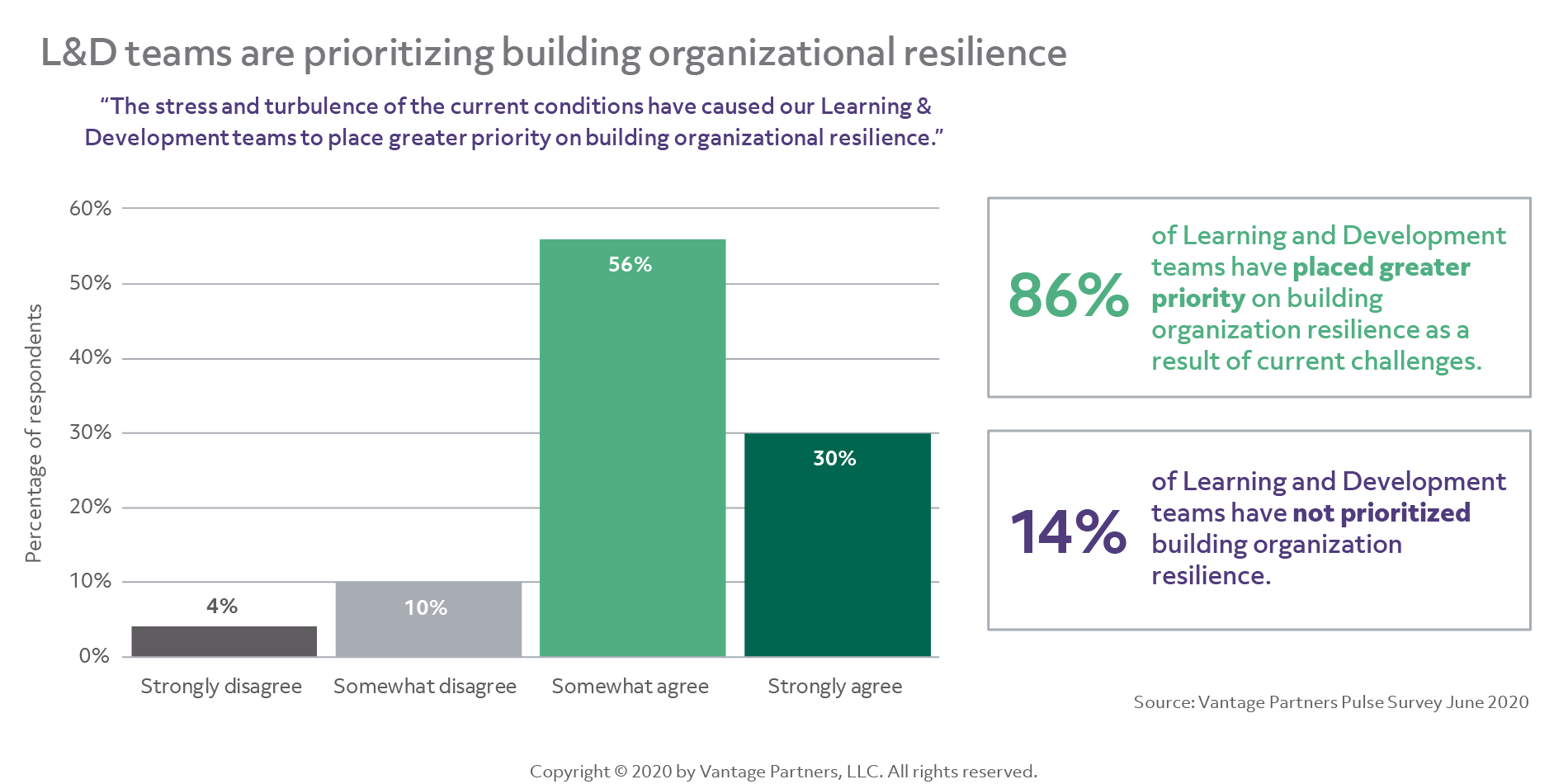
But resilience is more than toughing it out. Resilience also requires us to reflect on a moment’s impact, to anticipate what comes next, and to plan proactively and accordingly. Surely, times have shown us true grit’s weight in gold, but like the challenges we face as a global community and our critical ongoing conversations about them, resilience challenges us to understand for what and for whom we endure.
In the learning and development space, we build resilience and weather the storms for two great loves: our businesses’ strategies and the people who bring them to life. Like everything else in the world, though, that worthwhile work has only become more complex as employees have gone remote and as executive teams have reexamined their strategies—and as learning and development professionals have had to explore how they can help with more “operational” challenges than “learning” challenges.
How can we embrace these moments of challenge as opportunities to influence how stakeholders and internal clients view learning and development?
In Vantage Partners’ latest Learning Lab, held as a virtual event on June 22, we brought together our growing community of L&D peers to prepare, share, and present how they and their teams are meeting (dare I say it) these unprecedented times. Especially helpful in driving and contributing to the group’s conversation were our featured presenter, Tracy Tibedo, director of global commercial training for Thermo Fisher Scientific Chromatography and Mass Spectrometry Division, and Michael Woodard, director, performance optimization at United Distributors.
Following are the insights we drew from this critical effort to help us all build resilient organizations—and to help demonstrate learning and development’s critical role in that mission. (To learn more, see notes, slides, participant polls, and other takeaways from the June 22 Learning Lab.)
1. Spot how the conversation is changing—and shape it.These days, L&D conversations with the C-suite have an added layer of complexity. They’re being asked to do more with less, as requests for training rise and as bottom lines tighten.
Many businesses are still engaging L&D tactically instead of holistically, and the trend speaks to L&D’s need for another, less obvious dimension of the resilience we seek: influencing.
Influencing—defined as the ability to solve problems, reach joint decisions, and get results with and through others—empowers us to do more than just support the agendas of our internal clients, and positions L&D as trusted advisors.
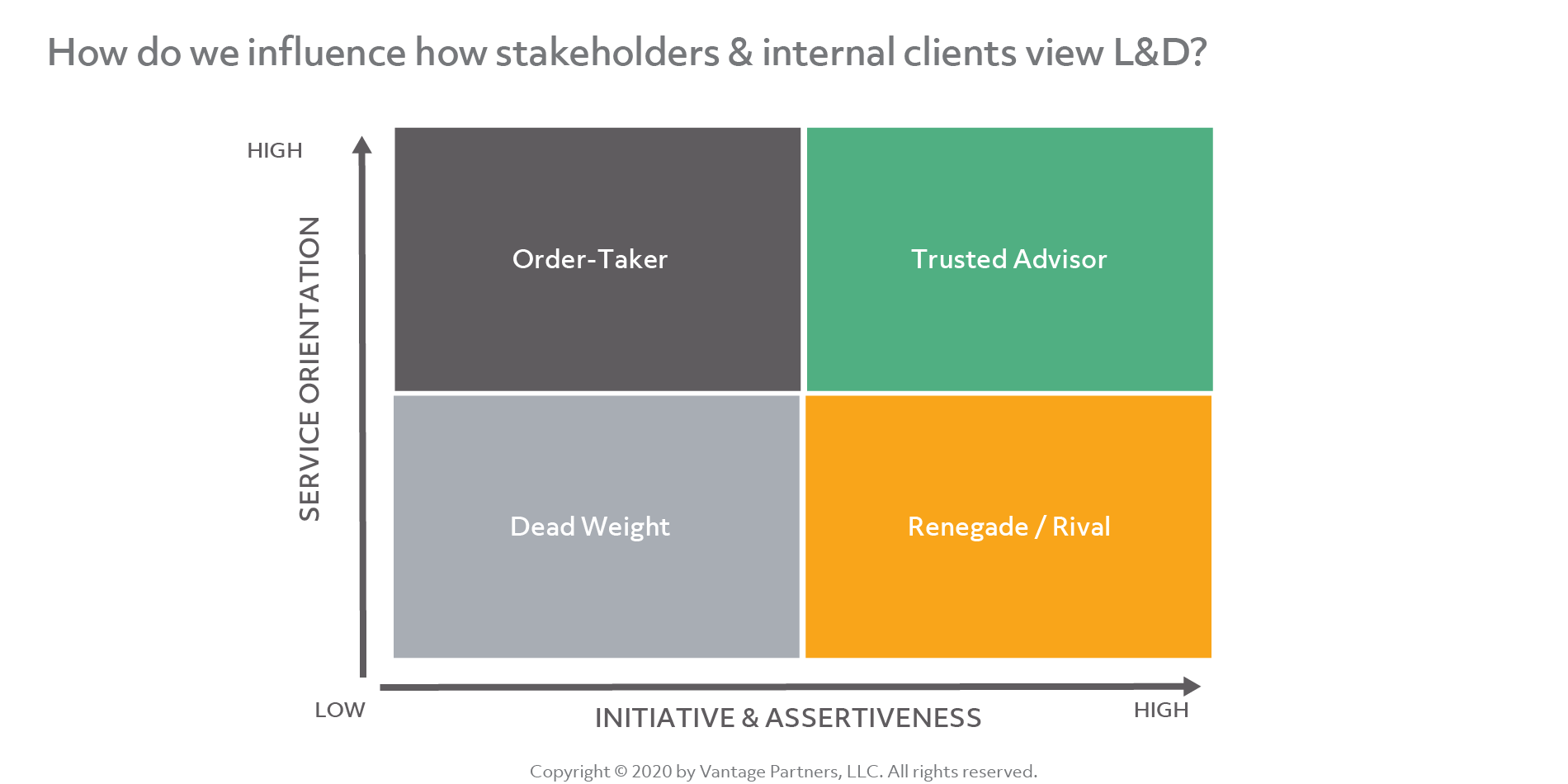
The reality is that in the past four months, L&D professionals have taken on a radically reinvented role as architects of the “new normal,” from curating role-specific training for virtual functionality; to recommending how to build relationships in a world with no coffee dates; to showing videoconferencing novices how to work a webcam.
With all of that comes the business case for organizations to get out of reaction mode and invest in longer-term learning. “We hardly needed the current pandemic to drive home the notion that we should prepare ourselves and our organizations to be successful when things get rough,” noted Danny Ertel in an April Medium article. “We all should think about, and prepare, to thrive and not just survive.” The executive team has no better strategic partner in recognizing that than learning and development leaders.
As you do so, remember Tracy’s advice: “Data always helps.” Presenting the evidence your team has from benchmarking and rankings data can illustrate to executives “where firms are at parity or where there are gaps”—especially when compared to our competitor firms.
These honest, data-driven relationships establish a more direct, more transparent communication chain. Michael Woodard has experienced this firsthand at United Distributors, having joined the executive advisory board. Because Mike is there, he not only receives critical business updates, but also weighs in on how to address the organization’s challenges and skill gaps.
Make your case and ask for your seat at the table. You’ve certainly done the work for it.
2. Consider the skills we need and how we teach them.The world is changing, and so are learner needs—at all levels of the enterprise.
As Danny noted in a recent article on “The Soft Skills of Adaptive Leaders,” just 14% of CEOs believe that they have the leadership talent to execute their strategies, per the Global Leadership Forecast. The World Economic Forum found recently that 54% of employees will require significant reskilling and upskilling by 2022. 80% of talent professionals say “soft” skills are increasingly important to company success, according to LinkedIn’s 2019 Global Talent Trends.
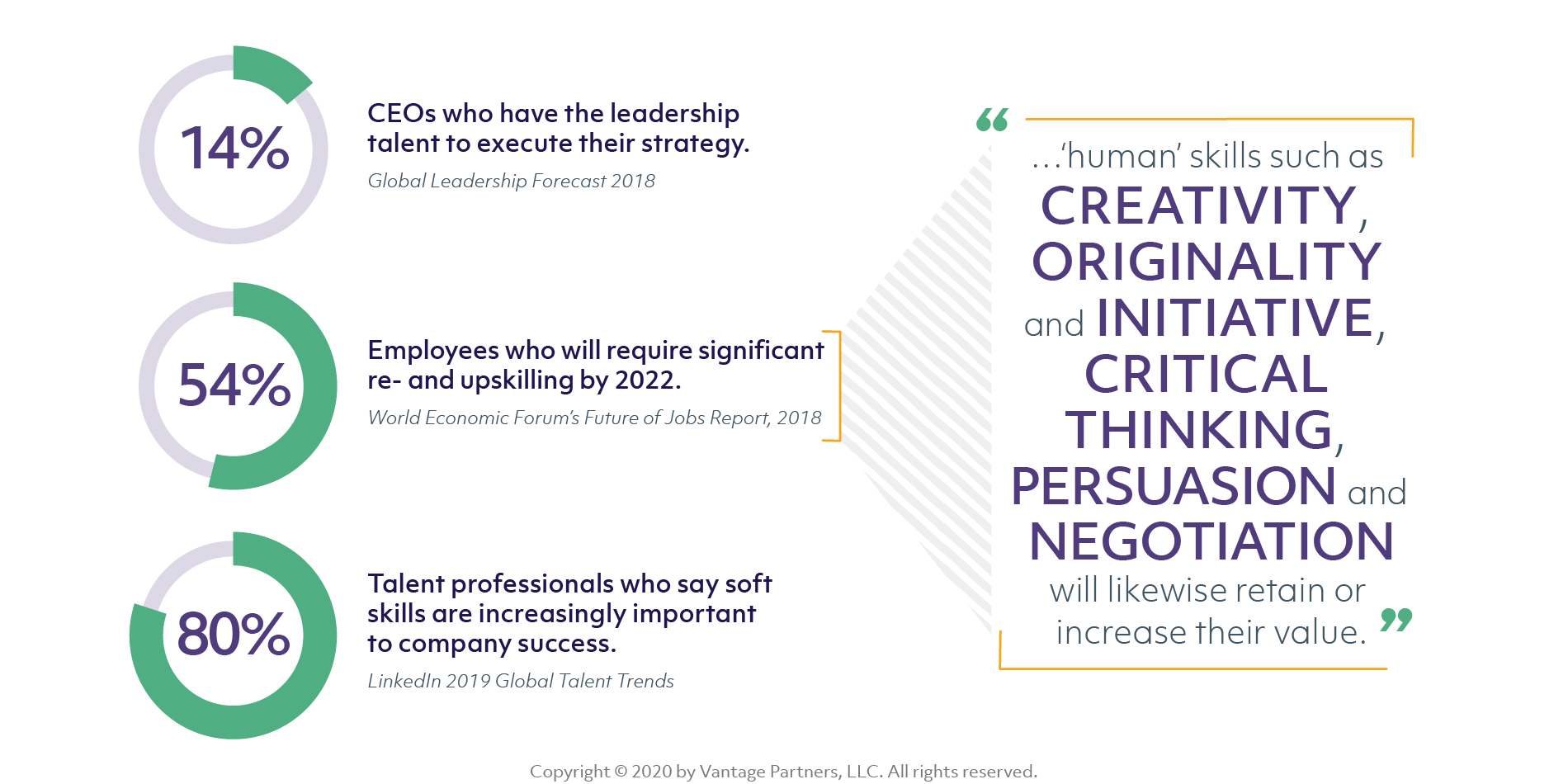
And all of that was before the world shifted amidst COVID-19.
Now, in addition to the critical “human” skills of leadership, empathy, and critical thinking, learning and development professionals are compelled to expand their offerings—rightfully—to trainings on bias and inclusivity; on allyship with people of who have been marginalized over their race, ethnicity, sex, gender, or religion; on combatting Zoom fatigue; on separating the personal and the professional when working from home; and on heutagogy, otherwise known as self-determined learning.
These seismic expansions of L&D scope are as challenging as they are thrilling. As we set out to build resilience as a core organizational competency, Tracy reminds us, it’s critical to challenge legacy L&D approaches, which often prioritize disjointed learning journeys in the form of short one-off sessions.
At Thermo Fisher Scientific, Tracy and his team have made a concerted effort to space out training, offer different reinforcement modalities, provide practice opportunities, and make coaching more readily available. Learning is a process rather than an event.
Though it has always been a challenge to draw a straight line from training to increased sales—particularly amidst COVID-19—Thermo has observed anecdotally more representatives excelling in the field after embracing these methodologies.
3. Watch for the next storm before it gathers.Difficult as it may seem, fast-forward in your mind to the next crisis that your organization will face. What are you starting to do, right now, to prepare for it and create resilience?
Perhaps you are asking your stakeholders and internal clients to think about the purpose of resilience, why we need it, and how individual resilience contributes to organizational resilience.
Perhaps you are diving deeper into analytical and tracking capabilities within your training software so that you can demonstrate data to your leadership quickly and efficiently. (For more on this topic, read the takeaways from the March 30, 2020 Learning Lab.)
Perhaps you are generating a weekly content playlist of articles, podcasts, and TED talks—in which case, might I suggest the Vantage Partners blog in your next distribution?
The point is not to have a single tactic. On the contrary, we all should be developing multi-layered, multi-pronged plans for whatever comes next. Because if 2020 has shown us anything, we do not know what “it” is, and we do not know when “it” will arrive.
“This moment has taught us to be ready to be agile and make changes quickly,” reflects Tracy. “My team is better prepared to make changes on a dime. If for some reason a pandemic [or anything else] happens again, we’ll be able to react faster” because of what the team has learned over the past several months.
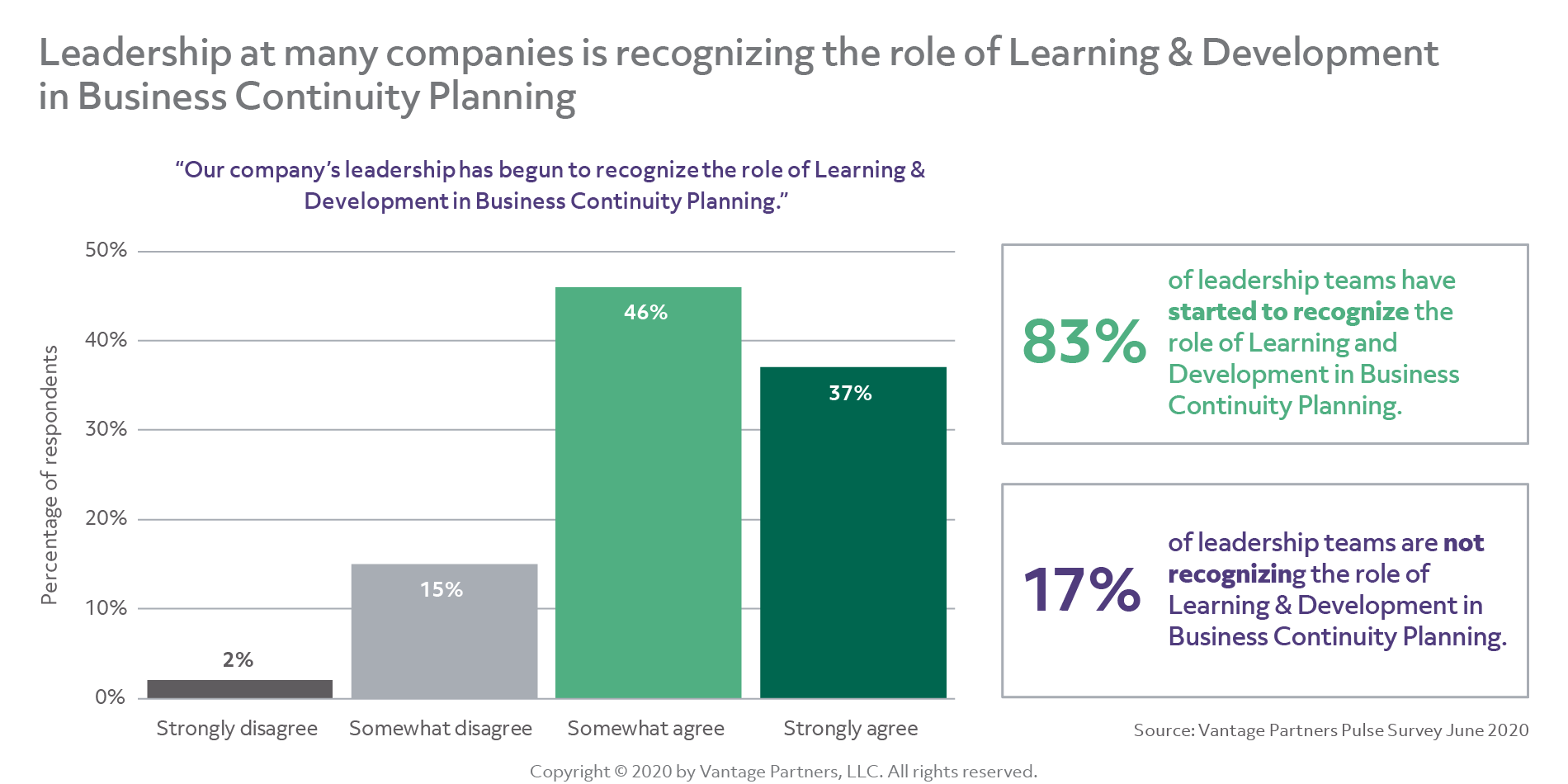
This responsiveness and sense of responsibility have established Tracy and Michael as leaders within their respective organizations, and their anecdotes help explain how Vantage Partners found in our last pulse survey that 83% of leadership teams now recognize the role of Learning and Development in business continuity planning.
To prepare for tomorrow, organizations need a good sense of what is happening today. Impactful L&D professionals know that story and can tell that story, anytime and anywhere. In that sense, they are pivotal players in developing the resilience of an organization.
For more of our experience on this topic, visit our Leadership Development page.
.png?width=512&height=130&name=vantage-logo(2).png)

